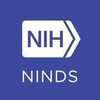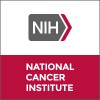
Oxandrolone Compared With a Placebo on Growth Rate in Girls With Growth Hormone-Treated Turner's...
Turner's SyndromeRATIONALE: Turner's syndrome is a disease in which females are missing all or part of one X chromosome and do not produce the hormones estrogen and androgen. Giving growth hormone may help girls with Turner's syndrome attain a more normal height. It is not yet known if growth hormone is more effective with or without oxandrolone for Turner's syndrome. PURPOSE: Randomized phase II trial to study the effectiveness of oxandrolone in girls who have growth hormone-treated Turner's syndrome.

Phase II Study of Ribose, Uridine, and Thymidine for a Complex Syndrome Involving Excessive 5'-Nucleotidase...
5'-Nucleotidase SyndromeOBJECTIVES: I. Evaluate the efficacy of oral ribose in patients with a complex 5'-nucleotidase syndrome who have not received uridine (UR) and thymidine (TDR). II. Evaluate the efficacy of UR/oral ribose and UR/TDR. III. Evaluate the efficacy of oral ribose given in combination with UR/TDR.

Randomized Placebo-Controlled Study of Aerobic Exercise and Resistance Training Plus Megestrol Acetate...
Acquired Immunodeficiency SyndromeHIV Wasting Syndrome1 moreOBJECTIVES: I. Evaluate the effect of aerobic exercise and progressive resistance plus megestrol acetate on lean body mass of patients with human immunodeficiency virus-related weight loss (HIV-wasting). II. Evaluate whether exercise acutely alters immune function. III. Evaluate whether long-term exercise improves immunocompetence. IV. Evaluate the accuracy of multifrequency bioelectrical impedance spectral analysis in measuring body composition. V. Assess the impact of these therapies on quality of life. VI. Evaluate the effect of these therapies on the balance of energy intake and energy expenditure.

Vaccine Therapy in Treating Patients With Myelodysplastic Syndrome
LeukemiaMyelodysplastic SyndromesRATIONALE: A vaccine made from a person's myelodysplasia cells may make the body build an immune response to kill cancer cells. Combining vaccine therapy with sargramostim may kill more cancer cells. PURPOSE: Phase I trial to study the effectiveness of vaccine therapy plus sargramostim in treating patients who have myelodysplastic syndrome.

6-Hydroxymethylacylfulvene in Treating Patients With Refractory Myelodysplastic Syndrome, Acute...
LeukemiaMyelodysplastic SyndromesPhase I trial to study the effectiveness of 6-hydroxymethylacylfulvene in treating patients who have refractory myelodysplastic syndrome, acute myeloid leukemia, acute lymphocytic leukemia, or blastic phase chronic myelogenous leukemia. Drugs used in chemotherapy use different ways to stop cancer cells from dividing so they stop growing or die.

Phase III Randomized, Double-Blind, Placebo-Controlled Study of Guanfacine for Tourette Syndrome...
Tourette SyndromeOBJECTIVES: I. Evaluate the safety and efficacy of the alpha-2 adrenergic agonist guanfacine in children and adolescents with Tourette syndrome or other chronic tic disorder, and attention deficit hyperactivity disorder.

Cyclophosphamide Plus Bone Marrow Transplantation in Treating Patients With Hematologic Cancer
LeukemiaLymphoma3 moreRATIONALE: Drugs used in chemotherapy use different ways to stop cancer cells from dividing so they stop growing or die. Bone marrow transplantation may be able to replace immune cells that were destroyed by chemotherapy or radiation therapy used to kill cancer cells. PURPOSE: Phase I trial to study the effectiveness of cyclophosphamide plus bone marrow transplantation in treating patients who have hematologic cancer.

Fludarabine Phosphate, Low-Dose Total Body Irradiation, and Donor Stem Cell Transplant in Treating...
Accelerated Phase Chronic Myelogenous LeukemiaAdult Acute Lymphoblastic Leukemia in Remission43 moreThis clinical trial studies fludarabine phosphate, low-dose total body irradiation, and donor stem cell transplant in treating patients with hematologic malignancies or kidney cancer. Giving chemotherapy drugs, such as fludarabine phosphate, and total-body irradiation before a donor peripheral blood stem cell transplant helps stop the growth of cancer cells. It may also stop the patient's immune system from rejecting the donor's stem cells. The donated stem cells may replace the patient's immune cells and help destroy any remaining cancer cells (graft-versus-tumor effect). Giving an infusion of the donor's T cells (donor lymphocyte infusion) after the transplant may help increase this effect. Sometimes the transplanted cells from a donor can also make an immune response against the body's normal cells. Giving cyclosporine before the transplant and cyclosporine and mycophenolate mofetil after the transplant may stop this from happening.

Tipifarnib in Treating Patients With Myelodysplastic Syndromes
Chronic Myelomonocytic Leukemiade Novo Myelodysplastic Syndromes6 moreThis phase I trial studies the side effects and best dose of tipifarnib in treating patients with myelodysplastic syndromes. Tipifarnib may stop the growth of cancer cells by blocking some of the enzymes needed for cell growth.

Biological Therapy in Treating Patients With Myelodysplastic Syndrome
LeukemiaMyelodysplastic SyndromesRATIONALE: Biological therapies use different ways to stimulate the immune system and stop cancer cells from growing. Combining different types of biological therapies may kill more cancer cells. PURPOSE: Phase II trial to study the effectiveness of biological therapy in treating patients who have myelodysplastic syndrome.
